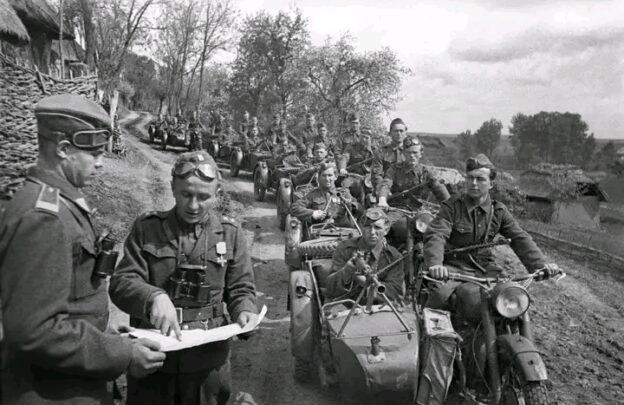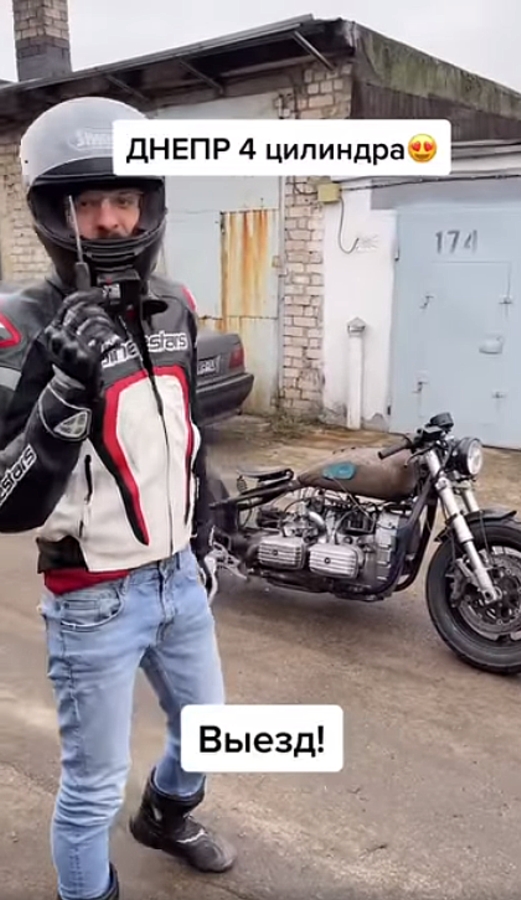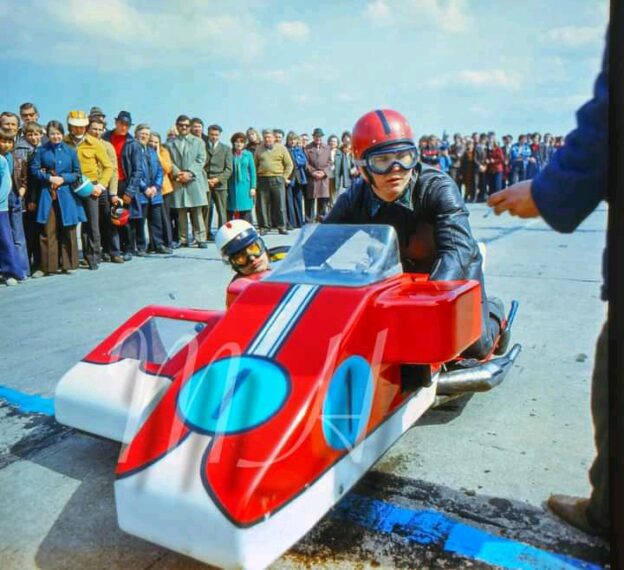JD and John sending you warm Christmas wishes, and all the best for 2024. Safe travels!



JD and John sending you warm Christmas wishes, and all the best for 2024. Safe travels!

Friday

M-72

Ilya sends, just to make you happy and have a nice day.
In my own quest for more information on the DKW racers and their connection with the Soviets, I found a book in German “DER LETZTE KOMPRESSOR ZWEITAKTER MIT DKW-GENEN” (translates to “THE LAST KOMPRESSOR TWO-STROKE WITH DKW GENES” by Frieder Bach and Heiner Jakob.
Starting in 1945, August Prüßing developed a two-stroke opposed-piston engine with two cylinders and a Centrix compressor in Chemnitz on behalf of the Soviet Military Administration in Germany (SMAD). The basic construction was designed for displacements of 250, 350 and 500 ccm. This engine was the last new construction of a turbocharged two-stroke engine and thus the end of a glorious era in which DKW had played a prominent role in international motorcycle racing since the 1920s and 1930s. The entire wealth of experience from almost two decades of DKW racing development found its expression in an extraordinary design that determined racing events in the USSR well into the 1950s. The design was briefly revived in a modified form in a self-made car by Brunswick privateer Kurt Kuhnke, only to lose its raison d’être with the FIM’s international ban on compressors in 1950. This documentary aims to keep alive the memory of a milestone in motorcycle racing about which little has been known so far.
There is much conjecture about what actually happened with pre-war DKW race department and later events in the Soviet Union. and since. This vacuum was quickly filled with myth, legends and lies.
What did they sound like? These machines were give the nickname “Der Trommelfellbohrer” – “The eardrum drill” as can be seen in footage of crowds running for their lives with their hands over their ears!

His name was Boris Mikhailovich Kremlev. He was the undoubted leader in the formation of the first “motor section” of the Moscow Circle of Skaters and Cyclists – Amateurs (MKKiV-L).
Boris Mikhailovich received an offer that he had never dreamed of – to take part in the 1913 international Tourist Trophy race in Scotland, on the Isle of Man, riding for the Rudge-Whitworth team, the most prestigious race in the world, One of the most experienced motor sportsmen in Russia, Boris Kremlev accepted the offer and went with the factory racers to Scotland.
Boris Mikhailovich was provided with the newest Rudge Multi with a 3.5 hp engine.
Boris Kremlev left interesting memories of his trip to England, published at the end of 1913 in the “MKKiV-L Yearbook”, which is in the Velomuseum collection, where he very accurately and with humor described all the vicissitudes of training and the race itself.
In practice for the race Boris recounts “I hit the stone wall of the bridge with terrible force. The first impression upon impact was as if all my insides were torn or torn off, my breath completely stopped, and I, getting out from the wreckage of the motorcycle, I gasped for two minutes with my mouth, air stubbornly refusing to go into my lungs. To top it off, I got severe pains in my stomach, so I could neither sit up nor lie down. I still somehow pulled the motorcycle aside, as it posed a great danger to other riders. The motorcycle was twisted to a glossy finish: both wheels were completely crumpled, the frame arched, and the top of the cylinder was hanging from a magneto wire,
After recovering, on the third day after the accident, Boris Kremlev received a new Rudge motorcycle and continued training. Despite the complete lack of experience in mountain racing, the Russian motorcyclist in a short time became one of the strongest athletes in the team and was highly respected for his courage and strong-willed qualities.
In those years, the Tourist Trophy was the most difficult and prestigious motorcycle race in the world, although the statistics of accidents terrified anyone. On the first day, 162 athletes started in two categories. After the first round there were 111 left, after the second – 91 and after the third – 79. 83 people were eliminated. On the second day of the race, 79 people started, after the first lap there were 40 left, after the second – 35, after the third – 31, and only 17 drivers finished. Three motorcyclists were killed, and both city hospitals were filled with mutilated competitors. The Russian stayed in the hospital for 6 days, after which he went on crutches, accompanied by friends from the Rudge motorcycle team, to watch the track races in Brookland.
Returning to his homeland with a new Rudge motorcycle, Boris Kremlev took part in the First Russian “Motorcycle Olympics”. The competitions were held in Kiev in August 1913 and were an outstanding event in terms of their importance for Russian sports! The program of the Games included road motorcycle races of 267 kilometers along the route Kiev – Chernigov – Kiev.
The success was also influenced by the unsurpassed quality of all parts and the assembly itself, provided by the Rudge-Whitworth plant, which stood at the very beginning of the production of bicycles and motorcycles. As a result, the Rudge Multi from 1911 to 1920 was considered one of the most advanced all-round racing bikes in the world.
sources:
Andrey Myatiev
The Illustrated Encyclopedia of Motorcycles, Irwin Tragatsch
iomtt.com

I started the first version of this site on 02.02.2002, so on 02.02.2022 it’s our 20th anniversary, thanks to Cat for keeping the site alive, this is version 3.0. This site has bought so many people around the world together and made so many lifelong friendships, even helped the global economy (in a very small way).
It reminds me of the kind words Aneta posted 10 years ago:
“I want to congratulate you on the 10th anniversary, you have done a great, great job. You’ve made it possible for so many people to connect. And to exchange information, advice, experience, sometimes emotion too. You’ve created a wonderful place here, THANK YOU VERY MUCH! Cheers”… Aneta Mrazek KOLYASKA Poland.
Some of you have been with us along the entire journey, and we’re still here!
Cheers and proost everyone!

This guy is pretty amazing. Link is to his YouTube Channel. Interesting how he made a 4-cylinder Dnepr. Excuse the ads, but this is sort of, riveting!

A beautiful photo, with a very supportive crowd of onlookers, with a sidecar crew anticipating the race ahead. Wonderful.